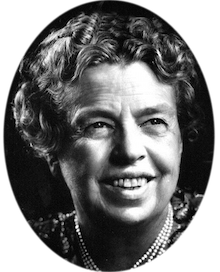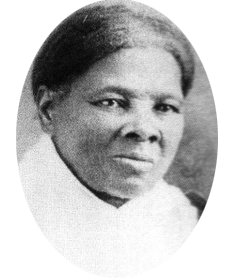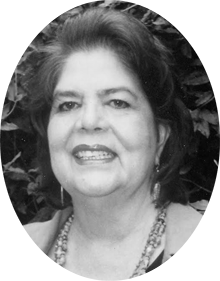Women On 20s, with your help, aims to compel historic change by convincing President Obama that NOW is the time to put a woman’s face on our paper currency. With over 256,000 voters casting ballots over the last 5 weeks, Americans have chosen which of the 15 inspiring American women heroes will go on to the Final Round of voting. And now we reveal that Eleanor Roosevelt, Harriet Tubman and Rosa Parks are the people’s choice and will advance to the final ballot for your consideration. In addition, Cherokee Chief Wilma Mankiller has been added to the final ballot by popular demand in order to include a choice of a Native American to replace Andrew Jackson on the $20 bill.
We believe this simple, symbolic and long-overdue change could be an important stepping stone for other initiatives promoting gender equality. Our money does say something about us, about what we value. So together let’s make our money egalitarian, inclusive and an affirmation of American values! Our hope is to generate an overwhelming people’s mandate for a new $20 bill, to be issued in time for the 100th anniversary in 2020 of the Constitutional giving women the right to vote
Let’s make the final round of voting as compelling as the first. Think of it as honoring the vote by casting your vote. The process of commissioning, designing and minting a new bill takes years, so we must act now. You helped out in Round 1 to spread the word and sparked a national conversation about respecting the accomplishments, power and influence of American women.So please continue to like us on Facebook, follow us on Twitter, and email everyone you know with a link to this website.
If you’d like to help us fund the most far-reaching, informative and empowering campaign possible, please click on the donate link under Support W2O above. Your contribution will be fully tax-deductible and no amount is too small.
“Women have always been an equal part of the past. They just haven’t been part of history.”
— GLORIA STEINEM
ELEANOR ROOSEVELT (1884 – 1962)
“No one can make you feel inferior without your consent.”
When it comes to summarizing the life of Eleanor Roosevelt, the term “First Lady” takes on so many meanings. No wonder she often is ranked among the most influential women of the 20thcentury. So much more than the wife of President Franklin Delano Roosevelt, Eleanor Roosevelt marked firsts in so many ways. She was the first president’s wife to take an activist role and present her causes directly to the people through her own press conferences, syndicated columns and radio broadcasts. She took a leading role in addressing the needs of women, children, laborers and minority groups, never shying away from unpopular positions. She got out of the White House and connected directly with Americans of every stripe, both here and abroad. And after the death of her husband, she expanded her reach around the world as a U.N. delegate and champion of human rights, nicknamed “First Lady of the World” by President Harry S.Truman.
Born into privilege in 1884, Eleanor’s young life took a tragic turn with the death of a brother and both her parents by age 10. Painfully shy and awkward, she was shipped off to boarding school in England at 15, where she was deeply influenced by the feminist headmistress, laying a foundation for her future social activism. In 1905, she married her handsome and politically ambitious distant cousin, with the blessing of her adored uncle, President Theodore Roosevelt. Before long, she was juggling the responsibilities of raising six children, running multiple homes and hosting political gatherings. But during World War I, now the wife of the Assistant Secretary of the Navy, she managed, too, to speak at patriotic rallies and work with the Red Cross, visiting wounded soldiers and working to improve conditions for the mentally ill. After ratification of the Nineteenth Amendment in 1920, she forgot her opposition to women’s suffrage and actively worked with the League of Women Voters.
Despite knowledge of her husband’s infidelities, Eleanor steadfastly supported him after he contracted polio, taking a leading role in shaping his political career. Often traveling as his surrogate campaigner in the 1932 presidential election, she helped FDR win office with the widest margin in history, in large part due to her political astuteness and rapport with the downtrodden in post-Depression America. Entering the White House, Eleanor was poised to fight for equal pay legislation, child labor limitations, and civil rights.
Despite criticism from Southern conservatives, Eleanor vocally promoted equal treatment of women and African Americans. She worked to get many women appointed to governmental positions. She held women-only press conferences. And when the Daughters of the American Revolution boycotted the 1936 concert of African-American Marian Anderson on the National Mall, the First Lady resigned her membership.
After FDR’s death in 1945, Eleanor did not fade into the shadows. As U.S. delegate to the United Nations, she fought for the passage of the Universal Declaration of Human Rights. She would remain an advocate for people everywhere, pushing for progress and never shy of stepping out first.
HARRIET TUBMAN (C.1822 – 1913)
“Every great dream begins with a dreamer. Always remember, you have within you the strength, the patience, and the passion to reach for the stars to change the world.”
Considered by many the “Moses” of her time, escaped slave Harriet Tubman became one of the country’s leading abolitionists before the Civil War. She returned to the South an estimated 19 times to rescue her family and others from bondage as a “conductor” on what was known as the Underground Railroad, an elaborate secret network of safe houses leading to freedom in the North. Later, with her intimate knowledge of the geography and transportation systems of the South, she became a valuable asset to the Union army as a spy and scout. Her Herculean accomplishments were attributed to extraordinary courage, shrewdness and determination. The Quaker Thomas Garrett said of her, “If she had been a white woman, she would have been heralded as the greatest woman of her age.”
Harriet Tubman was born sometime between 1820 and 1825 to enslaved parents in Dorchester County, Maryland. Originally named Araminta, one of nine children, she saw her father freed and many of her siblings sold in the typically fractured slave family dynamic of the time. At 13 she suffered a crippling blow to the head while refusing to help restrain a captured escapee, resulting in a life of seizures, headaches and narcolepsy. She also began at that young age, experiencing visions and vivid dreams that she believed were revelations from God. In 1848, Tubman summoned her defiance and fled to Philadelphia by way of the Underground Railroad.
Soon, Tubman began her forays back into Dixie, rescuing siblings, nieces, strangers and, on her last trip, her aging parents. She frequently outwitted her pursuers, using disguises and evasive tactics, later boasting she never lost a single passenger on the road to freedom. During the Civil War, Union soldiers, who had little knowledge of the country beyond their own small towns, relied on Tubman to guide them when poorly drawn and outdated maps could not. A gifted healer, Tubman also nursed the wounded.
After the war, Tubman continued her service to others. She advocated for education and property for freed slaves in the South and she cared for the elderly and poor. Later, she joined the early campaigners for women’s equality and suffrage. And finally, after retiring to a farm outside of Auburn, New York, she secured a pension for herself of $20 per month for her contributions to the Civil War effort. When she died in 1913, called “General Tubman” by her admirers, she was laid to rest with military honors –- one of the first recorded African American women to serve in the military.
ROSA PARKS (1913-2005)
“I would like to be remembered as a person who wanted to be free… so other people would be also free.”
While she may not have been the first person to challenge the so-called “separate but equal” Jim Crow laws in the deep South, Rosa Parks became known nationwide as “the mother of the freedom movement” when she refused to move to the back of the bus to make room for a white passenger in Montgomery, Alabama in 1955. Parks’ defiant act and the subsequent Montgomery bus boycott, became important symbols of the modern Civil Rights movement. She organized and collaborated with civil rights leaders, including Dr. Martin Luther King, Jr., a new minister in town at the time of her act of civil disobedience. And eventually, she became an international icon in her own right for resistance to racial segregation.
On December 1, 1955, Parks, a seamstress by profession, was on her way home from work on a Montgomery municipal bus and sat down in the first row of the “colored” section toward the back of the bus. When a white man boarded and found the front section full, the bus driver told everyone in Park’s row to get up and move back. While the others complied, Parks refused, and was promptly arrested and found guilty four days later. In reaction, Dr. King led a year-long, crippling boycott of the city bus system, getting jailed in the process and bringing the boycott to national attention. A year after Parks’ act of defiance, the US Supreme Court ruled that Alabama’s bus segregation law was unconstitutional.
Parks was no stranger to activism. At the time of her arrest, she was the secretary for the Montgomery chapter of the NAACP where her husband Robert was an active member. She had recently attended leadership training in workers’ rights and racial equality. Born Rosa Louise McCauley in 1913, she grew up living with her maternal grandparents, who were former slaves, and witnessed Ku Klux Klan activity and other forms of discrimination, attending segregated and inferior black-only schools.
Parks and her husband both lost their jobs as a result of her arrest and the ensuing court battles. Unable to find work, they relocated to Detroit, Michigan, where Parks worked for many years in US Representative John Conyer’s congressional office. She also served on the board of Planned Parenthood of America.
In 2013, upon the unveiling of a statue of Parks in the US capital, President Obama said, “In a single moment, with the simplest of gestures, she helped change America and changed the world…she takes her rightful place among those who shaped this nation’s course.”
WILMA MANKILLER (1945 – 2010)
“Prior to my election, Cherokee girls would have never thought that they might grow up and become chief.”
Wilma Mankiller, whose great-grandfather survived the deadly forced march of Native Americans Westward known as the “Trail of Tears,” rose to lead the Cherokee Nation more than 150 years later as principal chief – the first elected female chief of a Native nation in modern times. Throughout her reign from 1985-1995, cut short only by her own severe health challenges, she advocated for extensive community development, self-help, education and healthcare programs that revitalized the Nation of 300,000 citizens.
The sixth of 11 children, Mankiller, whose family name refers to a traditional Cherokee rank, was born in 1945 and raised on tribal lands in Tahlequah, Oklahoma in a home without electricity, indoor plumbing or telephones. Her father, Charley Mankiller was a full-blooded Cherokee, and her mother, Clara Irene Sitton, was of Dutch-Irish descent. In 1956, the family moved to San Francisco as part of a relocation policy to reclaim federally subsidized reservations in exchange for jobs in big cities. But jobs were sporadic and the family continued to struggle with finances, homesickness, and discrimination. “I experienced my own Trail of Tears,” Mankiller later wrote in her autobiography. “I wept tears that came from deep within the Cherokee part of me. They were tears from my history, from my tribe’s past. They were Cherokee tears”
In 1963, she married Hugo Olaya, an Ecuadorean businessman, and they had two daughters, Gina and Felicia. As a wave of political activism began sweeping the nation, Mankiller started visiting the Indian activists who for 19 months called attention to their plight by occupying the abandoned federal prison on Alcatraz Island in 1969. She began taking college courses at night while working as a coordinator of Indian programs for the Oakland public schools.
In 1977, after her marriage ended in divorce, Mankiller and her daughters returned to Oklahoma and her grandfather’s land in Mankiller Flats, where she eventually married her longtime friend, Charlie Lee Soap, a full-blood Cherokee traditionalist and fluent Cherokee speaker. Soon, she founded the Community Development Department for the Cherokee Nation, spurring projects that made dramatic improvements in community water systems and housing during the administration of Principal Chief Ross Swimmer. In 1983, Swimmer successfully ran for re-election with Mankiller as his running mate, making her the first woman ever elected deputy chief of the Cherokee Nation. And when Swimmer left office two years later to lead the US Bureau of Indian Affairs, Mankiller assumed the principal chief’s office. Despite opposition from the male-dominated Nation leadership at the time, she was elected in her own campaign in 1987, and re-elected again in 1991 in a landslide victory, collecting 83% of the vote. A string of health problems over the years that included lymphoma, a neuromuscular disorder, kidney failure and pancreatic cancer, dogged her throughout her career.
During her three terms, Mankiller tripled her tribe’s enrollment, doubled employment and built new housing, health centers and children’s programs in northeast Oklahoma. Under her leadership, infant mortality declined and educational achievement rose. In 1990, she signed an historic self-determination agreement in which the Bureau of Indian Affairs surrendered direct control over millions of dollars in federal funding to the tribe. Her leadership on social and financial issues made her tribe a national role model and she remained a strong voice worldwide for social justice, native people and women after she left office in 1995.
Mankiller, was the recipient of the Presidential Medal of Freedom in 1998, the highest honor given to civilians in the United States and was inducted into the National Women’s Hall of Fame in 1993. That same year, she published her autobiography, Mankiller: A Chief and Her People, and said she wanted to be remembered for emphasizing that Cherokee values can help solve contemporary problems. She also served as a guest professor at Dartmouth College.
PLEASE GO VOTE! HERE!







How does one find out how to become a blogger, or how much a blogger makes?
LikeLike